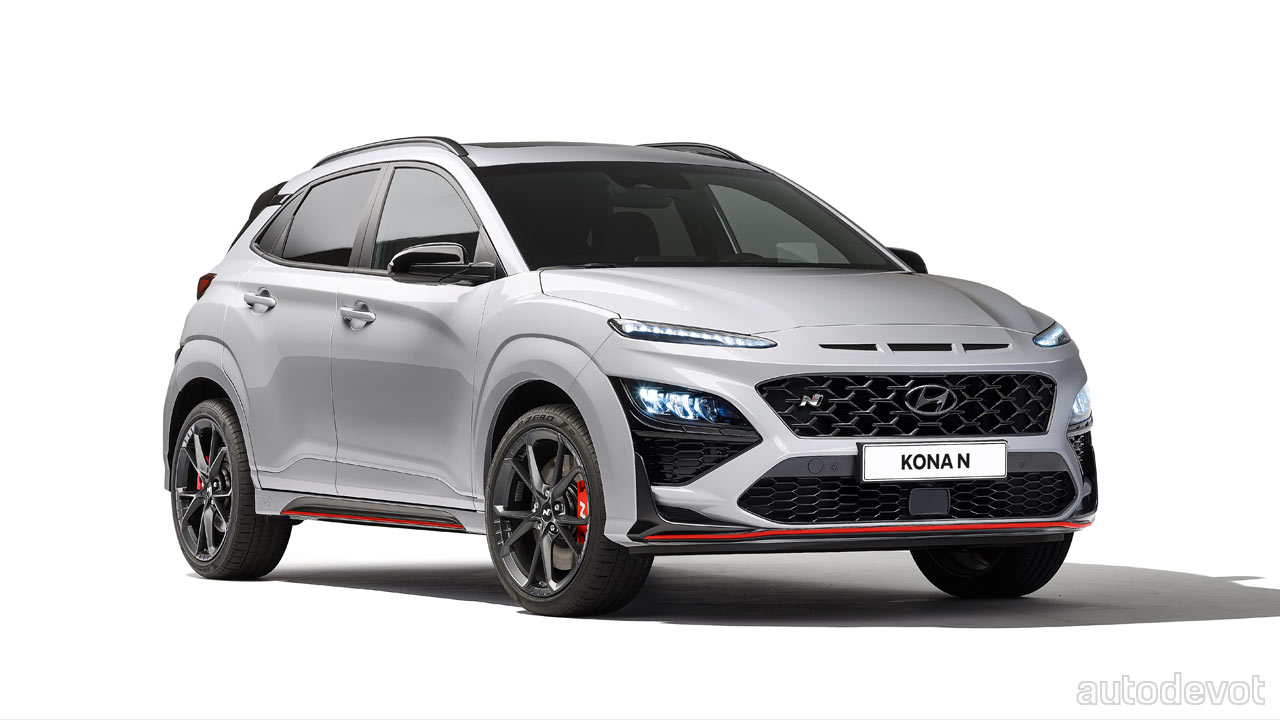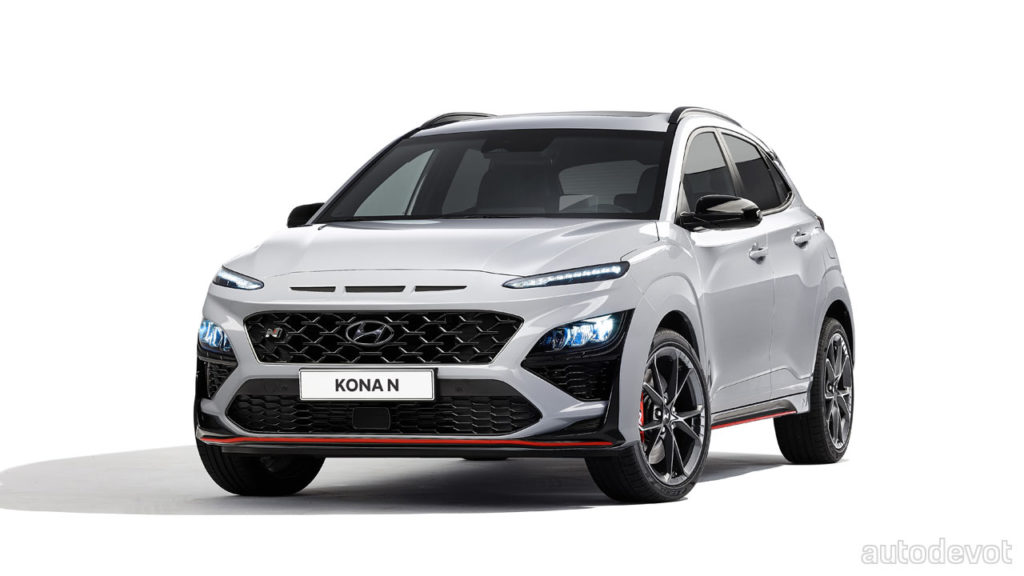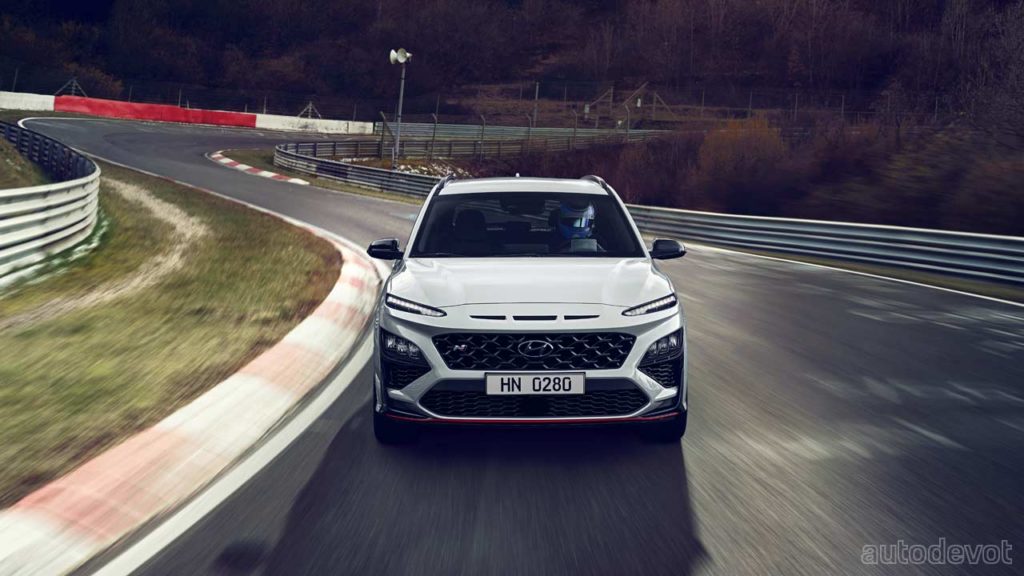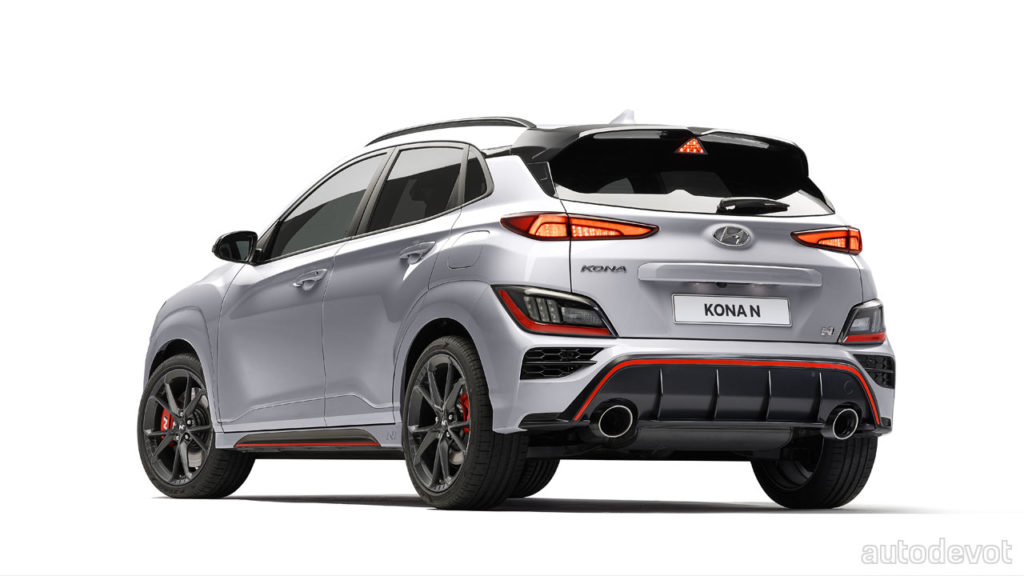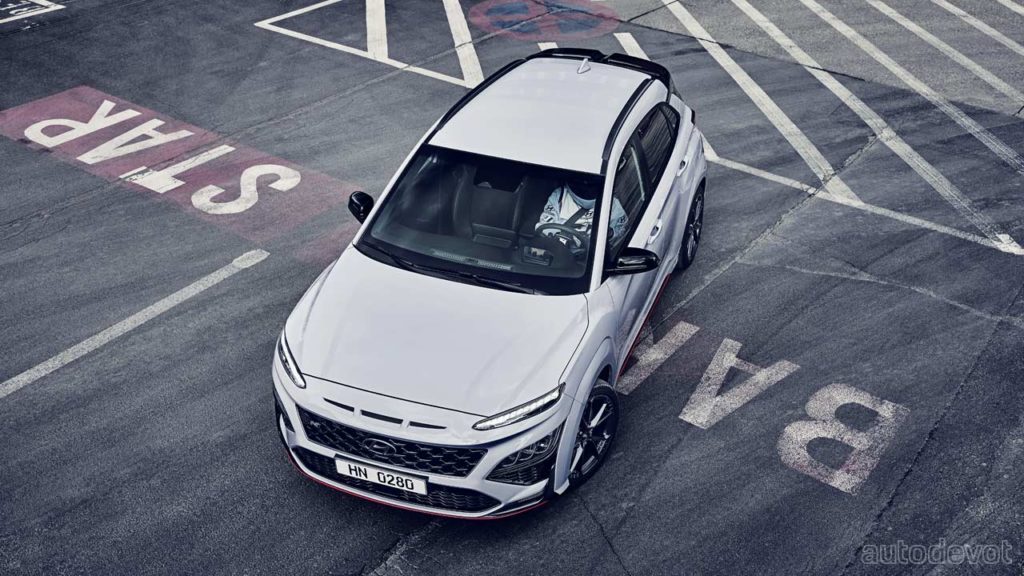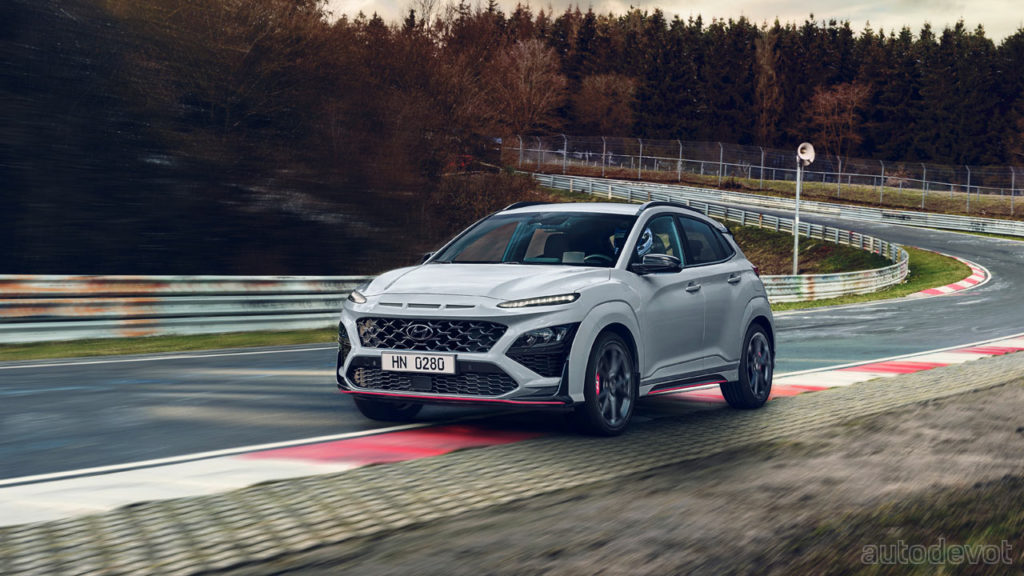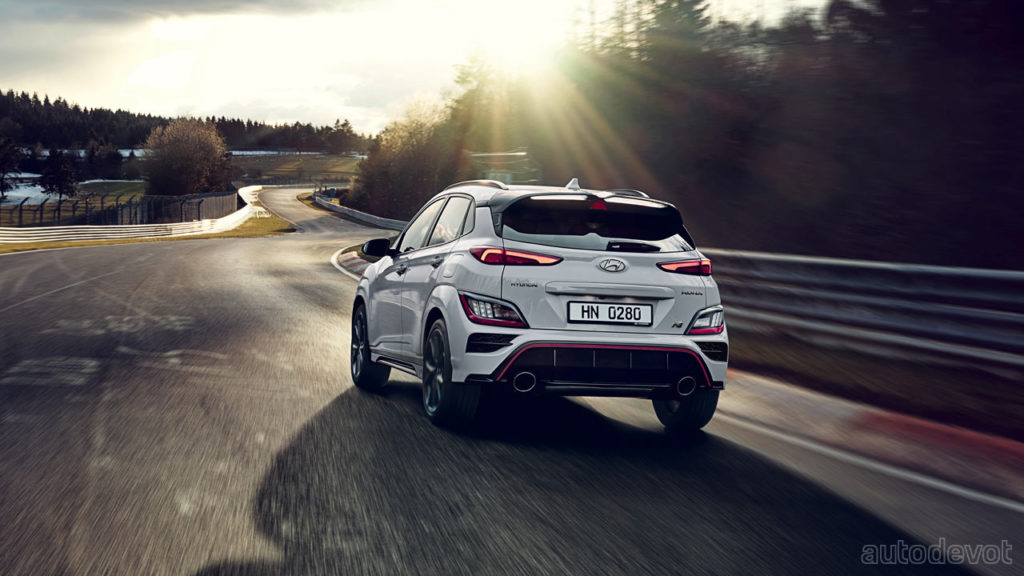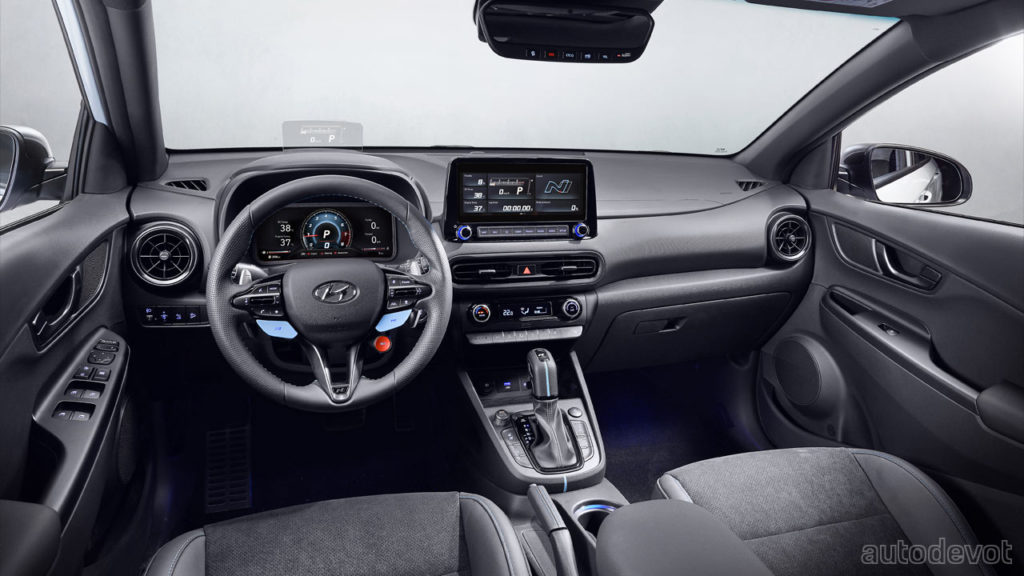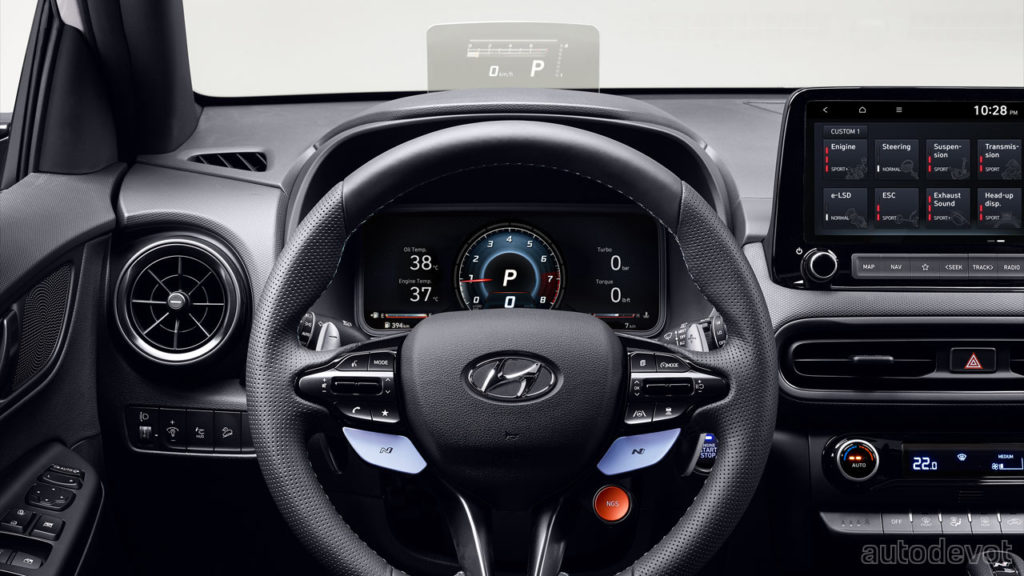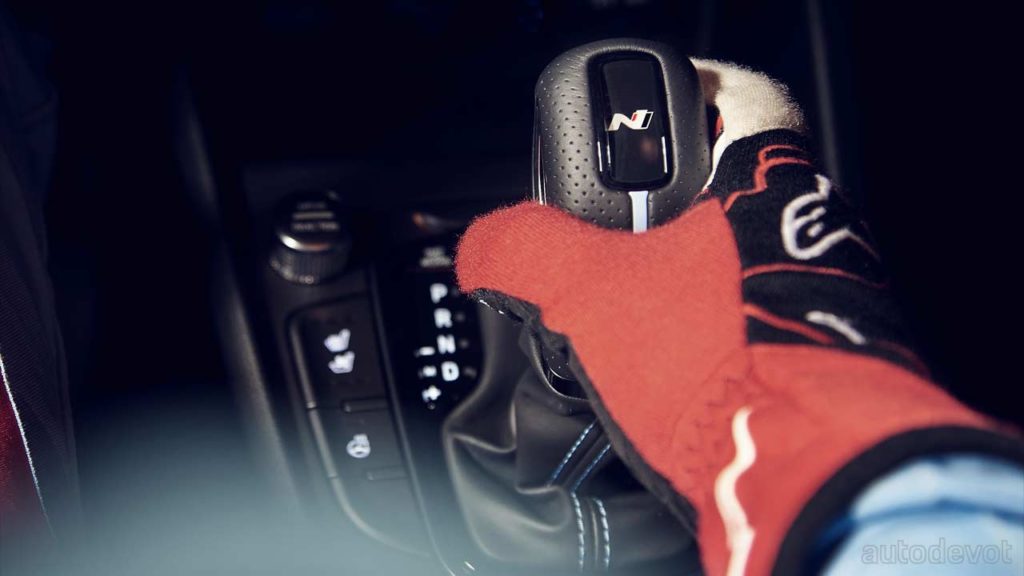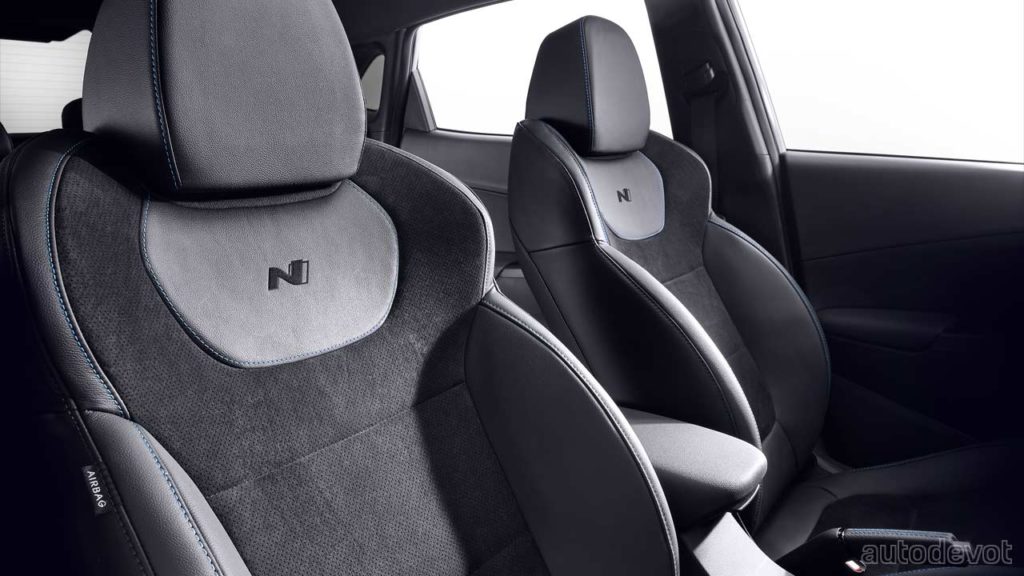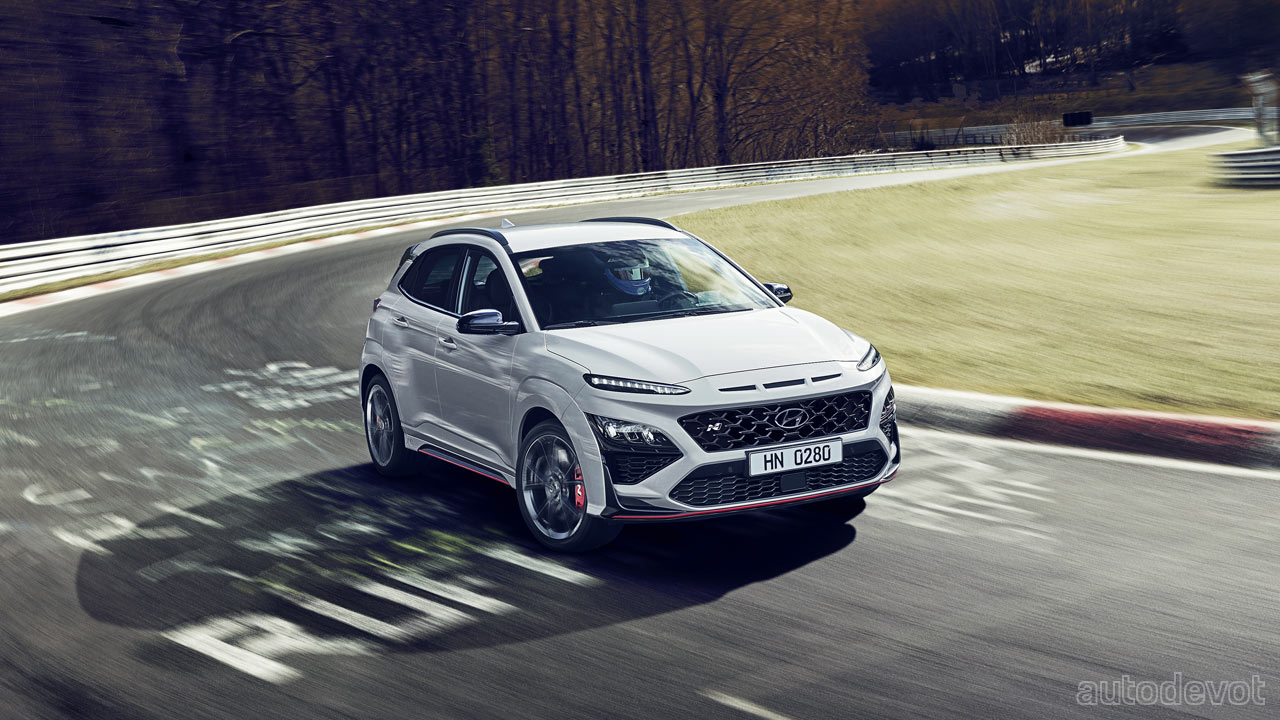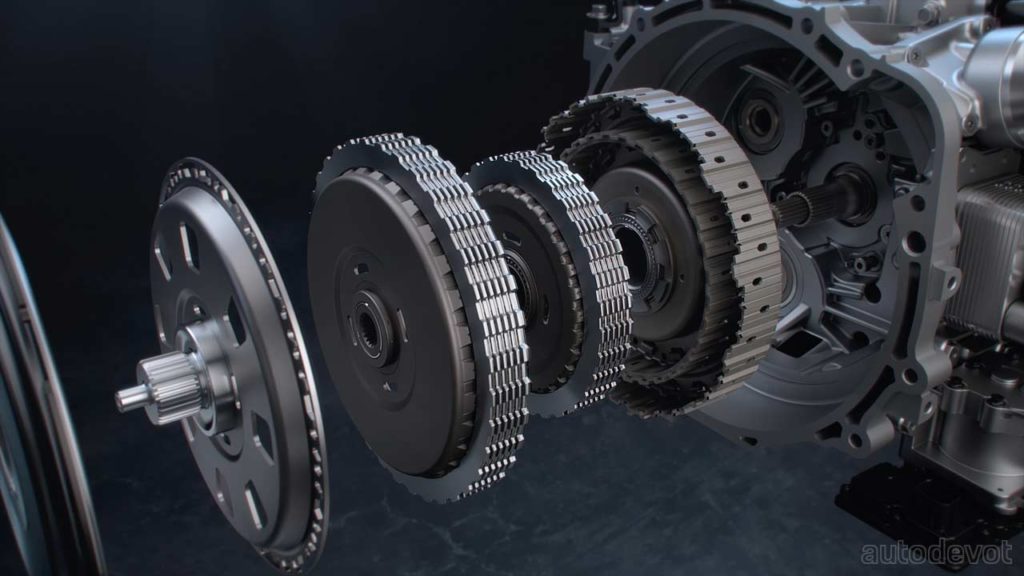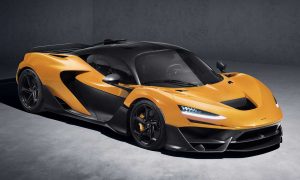Hyundai has revealed the Kona N — a hot version based on the refreshed Kona lineup and the brand’s first SUV to receive the proper ‘N’ badges. The hot SUV is confirmed to go on sale in the United States by fall 2021.
Let’s talk a little bit about its looks because it really looks like a custodian of the Nordschleife. The front fascia is pretty similar to the Kona N Line we saw last year, except for that Tomato Red pinstriping on the lower part of the bumper. In fact, the red pinstriping can be found on the side of the car and on the rear bumper as well. The rear fascia overall looks a bit more aggressive compared to the N Line, thanks to large tailpipes, smoked lower lamps and a large, double-wing roof spoiler. Also, notice a triangular third brake light. Rounding off the exterior looks are light-weight 19-inch forged alloy wheels, wrapped in 235/40 Pirelli P-Zero high-performance tyres.
The Kona N will be available in 7 exterior colors: Sonic Blue with Tomato Red accents (launch color), Phantom Black Pearl, Atlas White, Cyber Grey Metallic, Dark Knight Grey Pearl, Ignite Red, and Performance Blue.
As for suspension, the Kona N comes with an Electronic Controlled Suspension (ECS) system to control the dampening force, which is claimed to further enhance handling and stability. Also, the drivers can influence the stiffness with the push of a button.
The Kona N is a true ‘hot SUV’ with the performance level of a hot hatch. It breaks the rule that SUVs cannot be fun to drive. As an N model, it goes beyond the limits of an ordinary SUV. Kona N can carve corners on the racetrack and bring excitement to everyday driving. – Albert Biermann, President and Head of R&D Division at Hyundai Motor Group
The black-themed cabin features subtle blue accents and contrast stitching. The sports seats with pronounced side bolsters are claimed to offer excellent lateral support; Hyundai will offer cloth, leather or suede upholstery options. Heating function comes standard for front seats and is optional for the rear seats. Suede front seats come standard with ventilation. Also, the Kona N is the first high-performance Hyundai to be equipped with a Performance Head-Up Display (HUD). When turned on in Sport or N mode, it shows RPM, speed, and shift indicator.
Moving on to the juicy bits of the story then, the Kona N is powered by a 2.0-litre 4-cylinder turbocharged petrol engine that pumps out 206 kW (280 metric hp/276 bhp) and a maximum torque of 392 Nm (289 lb-ft). The engine will be paired with an in-house-developed, 8-speed, dual-clutch transmission (wet-type) that still drives the front wheels. However, the Kona N gets an electronically-controlled Limited Slip Differential (e-LSD) on the front axle, which should make the hot SUV more fun to drive.
In addition, the driver will get to play with five driving modes: Eco, Normal, Sport, N and Custom. The steering wheel also offers three settings: Normal, Sport and Sport+. As you might expect, a Launch Control function is included too.
N DCT features
The ‘N DCT’ as Hyundai likes to call it, boasts three functions: N Grin Shift, N Power Shift and N Track Sense Shift.
N Power Shift (NPS) engages when the car accelerates with more than 90% throttle, mitigating any reduction in torque during upshifts to deliver maximum power. This enhances fun-to-drive character by giving a “push feel” when upshifting. There’ll be some exhaust crackles too.
N Grin Shift (NGS) maximizes engine and DCT performance for 20 seconds. For maximum acceleration, the car will directly shift down to the most appropriate gear. To activate, the driver pushes a dedicated button on the steering wheel, and a countdown begins on the cluster showing the remaining seconds. After the “boost” has ended, drivers must wait at least 40 seconds to use it again.
This feature allows the driver to use the full potential of the car with only one button – for example, when chasing the best lap time on a track day. It can also be a benefit when overtaking or merging on a highway.
Finally, the N Track Sense Shift (NTS), as the name suggests, is calibrated for track use, and apparently helps the driver to focus more on the steering.
Based on motorsport data combined with the driver’s behavior, the car selects the right gear and shift timing in sport driving conditions to provide optimal performance.

Leave a Reply
Note: Comments that are unrelated to the post above get automatically filtered into the trash bin.
